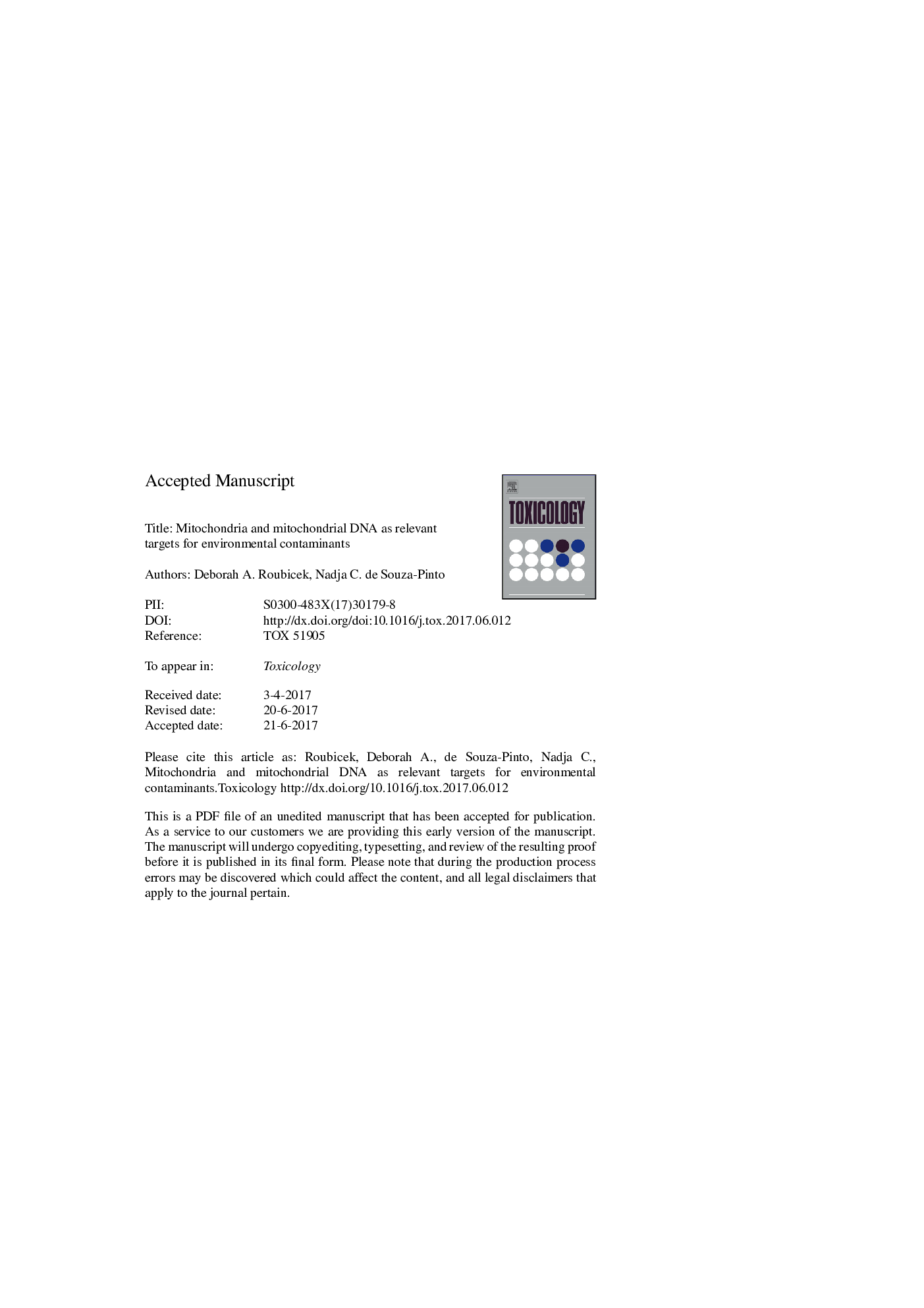| Article ID | Journal | Published Year | Pages | File Type |
|---|---|---|---|---|
| 8553050 | Toxicology | 2017 | 32 Pages |
Abstract
The mitochondrial DNA (mtDNA) is a closed circular molecule that encodes, in humans, 13 polypeptides components of the oxidative phosphorylation complexes. Integrity of the mitochondrial genome is essential for mitochondrial function and cellular homeostasis, and mutations and deletions in the mtDNA lead to oxidative stress, mitochondrial dysfunction and cell death. In vitro and in situ studies suggest that when exposed to certain genotoxins, mtDNA accumulates more damage than nuclear DNA, likely owing to its organization and localization in the mitochondrial matrix, which tends to accumulate lipophilic, positively charged molecules. In that regard, several relevant environmental and occupational contaminants have physical-chemical characteristics that indicate that they might accumulate in mitochondria and target mtDNA. Nonetheless, very little is known so far about mtDNA damage and mitochondrial dysfunction due to environmental exposure, either in model organisms or in humans. In this article, we discuss some of the characteristics of mtDNA which render it a potentially relevant target for damage by environmental contaminants, as well as possible functional consequences of damage/mutation accumulation. In addition, we review the data available in the literature focusing on mitochondrial effects of the most common classes of environmental pollutants. From that, we conclude that several lines of experimental evidence support the idea that mitochondria and mtDNA are susceptible and biologically relevant targets for pollutants, and more studies, including mechanistic ones, are needed to shed more light into the contribution of mitochondrial dysfunction to the environmental and human health effects of chemical exposure.
Related Topics
Life Sciences
Environmental Science
Health, Toxicology and Mutagenesis
Authors
Deborah A. Roubicek, Nadja C. de Souza-Pinto,
